Continuous cover forestry
Rachel Rose, New Zealand Tree Grower November 2019.
There is a lot of erosion prone land in the Manawatu-Whanganui region, plenty of existing forestry and like other parts of the country, growing and organised opposition to the conversion of whole farms into forestry. Horizons Regional Council recently commissioned a case study on continuous canopy forestry. The project focused on three closely related Whanganui entities − Papaiti forest, MacBlack Timber and Spotty Dog Farm at Martins.
Papaiti forest was planted by Richard Thompson and Laurel Stowell in the early 1990s. It has unintentionally become a bit of a flagship for alternative species continuous cover forestry. It has attracted interest from around the country, starting with a delegation from the Ministry for Primary Industries when it was brought into the Permanent Forest Sink Initiative in 2012. It was considered a pre-eminent example of a permanent forest.
Planting Papaiti forest
Papaiti is a dry stock farming area along the Whanganui river. Richard and Laurel’s forestry block is 15 kilometres from the centre of Whanganui on a south-facing slope which was erosion-prone marginal pasture before being stabilised by trees. There were pockets of gorse and a few natives at time of purchase in 1991.
The first planting focused on Tasmanian blackwood Acacia melanoxylon and macrocarpa. Poplar clones kawa and toa along with another acacia, silver wattle A. dealbata, were planted as nurse species and in shelterbelts but some have been grown to maturity and are already producing saleable timber.
Willows were successfully inter-planted among the blackwood as a nurse crop and to encourage the blackwood to grow upwards rather than outwards. They were removed after about 10 years. Although willows readily coppice and grow from the cut stumps, this was not a problem as by the time they were felled, the canopy had closed and it was too dark for regrowth to survive.
Black walnuts on a plateau at the top of the block were not successful, probably because the soil was far wetter than anticipated. Survivors were transplanted to an adjacent site where they have grown well and were replaced with poplars.
Eucalypts were planted on a dry, steep east-facing slope but they have not done particularly well. The seed lines were mislabelled by the nursery which supplied the planting stock. They were supposed to be Eucalyptus pilularis but the current tentative identification is E. botryoides. It is fair to say Richard’s interest in them has waned because eucalypts, with their very large crowns, are hard to extract in a continuous canopy regime because of the damage they cause to surrounding trees when they are felled.
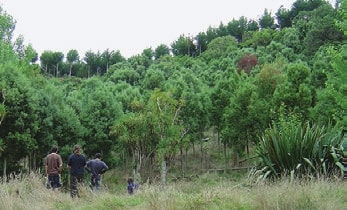
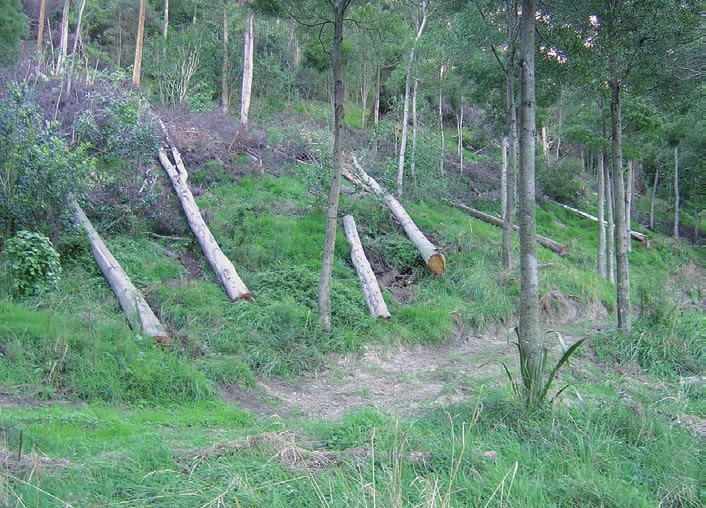
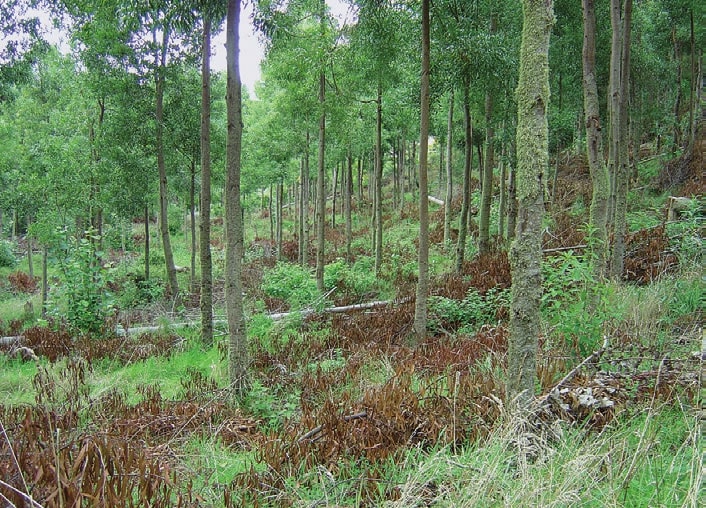
Tracks and pruning
Tracks were not established until after planting. Developing the tracks after planting was more difficult but it did have the advantage of reducing the erosion risk as the trees were still establishing. Tasmanian blackwood has good soil-holding capacity, forming interlocking networks of roots which locked the whole hillside up. That root network made track-making difficult but the trees survived any damage caused by the excavator.
The bulk of the forest was planted by Richard and Laurel themselves over a four-year period. They also grew most of the planting stock from a wide range of seed sources because they already had a nursery established on their lifestyle block to supply their landscaping business.
They pre-sprayed planting spots with herbicide and during the summer, released them by removing weeds around the trees by hand. After planting comes pruning, and most of that they also did themselves. A contractor was brought in to help with pruning macrocarpa for a couple of years when Richard was concerned that he was not keeping up with what was needed. However, when he discovered the contractor pruning with a chainsaw and carelessly cutting into the trunk, he resolved to do all further pruning himself. It highlights the still relevant challenge in finding contractors with the knowledge and interest to work with anything but radiata pine.
Weed control
The three stands of macrocarpa were originally planted four metres apart at 625 stems a hectare and are now thinned to between 400 and 550 stems a hectare. More thinning has produced better diameter trees. Blackwood was planted in groups of three at nine metre spacings and pruned up to five or six metres. Final selection was made at about 10 years old.
Canker has been a problem for the macrocarpa but its effect varies between the blocks, with stressed trees far more vulnerable. A stand on an eroded ridgetop exposed to wind and drying out in summer is the most affected by canker, although there is some variation in susceptibility even within a stand. Canker downgrades the timber. Sometimes the damage is obvious on the log or on the standing tree, but often the dead wood in the trunk has been completely occluded and it is not evident until milling.
Grass and weeds have not been much of a problem after the canopy closed. Chemical weed control is employed to keep old man’s beard and blackberry in check. These weeds are really important to keep in check, and Richard has gone so far as to control blackberry on his neighbours’ sides of the boundary fences. He also deals with periodic outbreaks of creeping dock.
Gorse was mainly shaded out rather than poisoned. Tree lucerne, a fast growing nitrogen fixer, was planted along the margins of the largest patch of gorse. Some herbicide was sprayed at the edges to prevent spread until the tree lucerne grew tall enough. A few Tasmanian blackwood were planted in lightwells in the middle of the patch and some mahoe grew up through the gorse. All of this combined saw the gorse eventually disappear without much effort.
Deer are a problem on the block, causing damage by browsing and rubbing. They have succeeded in ripping off tree protectors placed around young totara. Hunters have been permitted to shoot on the block, but with limited success as the deer are constantly roaming across a neighbouring radiata plantation and nearby blocks of bush and scrub.
Animals are not grazed under the trees and this has allowed the emergence of a naturally occurring native understory in recent years. Nearby pockets of remnant bush are providing a seed source. Totara has been planted in a small plantation in the front paddock and in gaps and along boundaries and form-pruned. Rewarewa and kahikatea are naturally establishing.
Milling and drying
Around 2011, Richard bought a Lucas portable mill with the aim of milling the thinnings which would begin to come out of the forest. His analysis indicated that a market for speciality timber did not exist and he would struggle to sell cutting rights or logs. He took a bold step and established a speciality timber merchant business in 2015, MacBlack Timber, named after the principal species grown at Papaiti.
Timber stacks are not a permitted activity in the rural zone within Whanganui district. This forced Richard to buy land in a commercial zone in town which has turned out to be a good location for drop-in sales, which are steadily building. An existing shed has been more than doubled in size and a joinery workshop established. A full-time joiner is building a range of products which make innovative use of knotty wood and short lengths of timber.
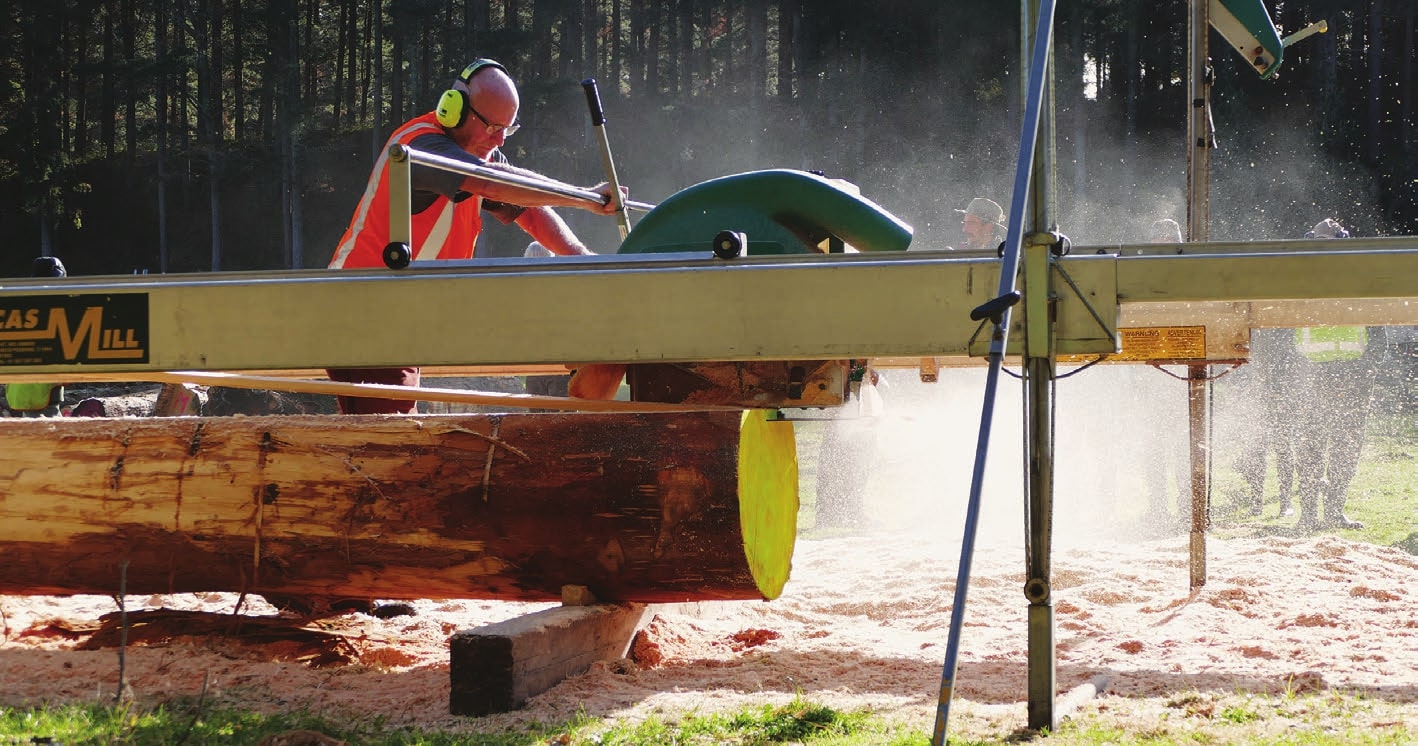
There is considerable wastage during the milling, grading and drying processes and Richard is working hard to find end-uses for what would otherwise end up as firewood. Timber that is no good for structural purposes because of knots is often very attractive, and knotty wood is very popular for panelling. MacBlack could sell a lot more cladding and decking than it can currently supply, although it sells for a lot less than clear grade − $1,380 a cubic metre for appearance grade knotty macrocarpa compared with $2,300 for clear timber.
It can take a year or more of careful management to dry the sawn timber down to stable moisture levels. Richard invested in a dehumidifying kiln in 2018 so that he could supply small amounts of kiln-dried timber to clients who need the timber urgently or have specific moisture content requirements.
A two-man crew run the portable Lucas mill in the district, milling mostly macrocarpa from old farm shelterbelts or woodlots. They also mill during winter from a base in town where logs are dropped and stockpiled. This keeps the sawmillers busy when it is too wet to access farm sites.
With this structure and experience, Richard is well-placed to market the production thinnings which will be brought out of Papaiti in the summer. Some thinnings have already made it on to the mill in the past couple of years but the mill, which can handle very big logs, is not the best choice for extracting maximum value from small diameter logs. It will come into its own when mature trees are extracted. Richard anticipates harvesting macrocarpa and Tasmanian blackwood when they are 60 cm in diameter at breast height.
There will be minimal effect on the ground thanks to the permanent forest method. Three mill sites are spread across the forest and there is more work getting the logs to the mill sites than the milling itself. They currently use a digger to move logs along tracks but Richard is evaluating other machinery. Some tracks will be further improved to aid access.
Only sawn timber leaves the property. Instead of a logging truck travelling over the narrow rural road which connects the forest to town, a ute with a double-axle trailer is loaded with sawn timber to go to the MacBlack yard. The maximum towing capacity is two tonnes, which is about two cubic metres of wet wood. Back at the yard it will be graded and carefully stacked to air-dry before being put to good use. There is a lot of cost, time and waste in grading and storing.
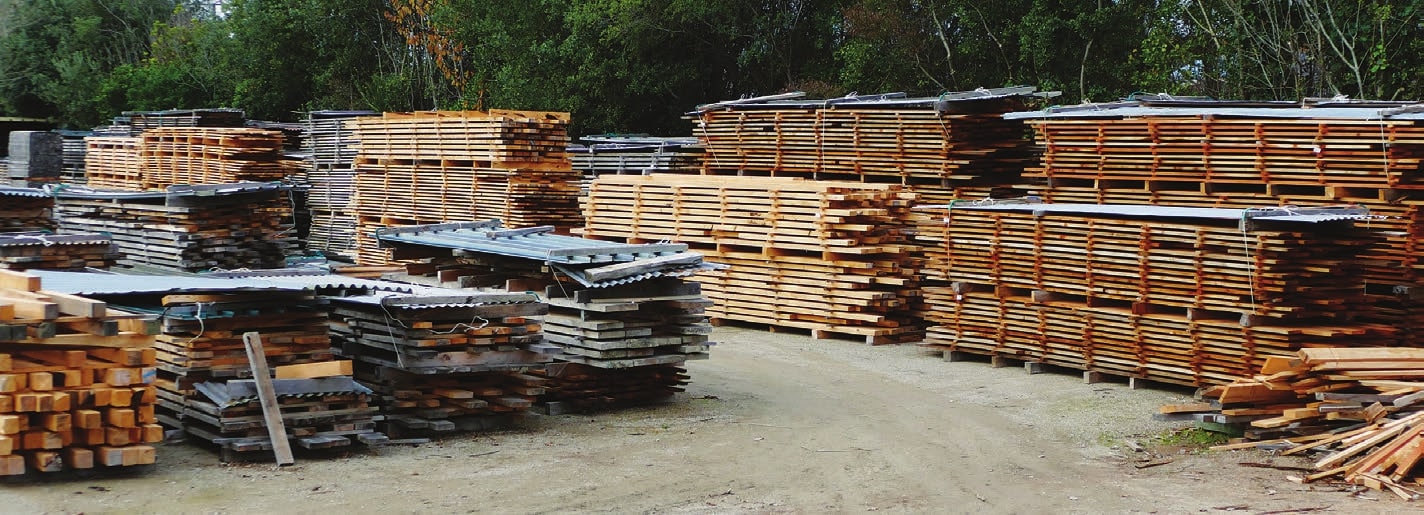
Logs from elsewhere
Another big project on the horizon is milling plantation grown redwood and lusitanica from a Tokomaru East forest, grown by another Middle Districts farm forester. One of the early problems MacBlack faced was buying logs. Much of the buying and selling in the region was by word of mouth and Richard did not have contacts or a reputation as a timber buyer when he started out.
This has changed and he is now being offered logs although there has been a lot of learning about how to value logs being put up for sale. There is not much transparency about market values and there is often unrealistic expectation among sellers. Only about half a log is recovered for timber and the recovery ratio is worse for trees with fluting trunks, big knots, thick bark or which has been damaged by disease or insects. Better ratios are achieved for larger logs, plantation grown trees and those which are well-pruned.
Richard now works regularly with several different firewood merchants and the deal can be structured in several ways. He may pay them to fell trees and deliver them to a shared base in the city, with all off-cuts and poor-quality logs going for firewood. Alternatively, they may sell him the best of the trees they fell, recognising they have a higher use than firewood, with price based on the grade of timber extracted. That reduces risk but ensures a fair price for the fellers.
In working directly with land owners, he may buy the logs outright or hire his crew at a day rate to mill timber to the land owner’s specifications, and the land owner keeps the timber. This is popular with farmers who want to use their own timber for farm buildings or fences.
Cooperating with competition
MacBlack’s biggest challenge is having enough dry timber to fill big orders. There is a lack of fluidity in the market. Richard cannot get enough of the right grade of timber to meet house-lot sized orders. However, at any NZFFA event there will be complaints about alternative species logs or sawn timber that cannot find buyers.
To help solve this problem, Richard is embarking on a strategy dubbed co-opetition, or co-operating with competitors, to fill large orders.
Buying wood from a competitor to top up a large order provides little benefit to either, but if they co-operate to fill an order, both merchants benefit. Consistent grading is crucial so that all of the products are of the specified quality. The costs of increasing and holding inventory are steep. Year-on-year growth figures are encouraging but it is still got some way to go to meet all its costs.
As for Papaiti forest, the A. dealbata was all milled after 16 years and found an enthusiastic local market as flooring and joinery. But the forest’s main yield still lies in the future. Richard has not decided whether he will fell individual trees or small coupes once the forest has reached maturity. There are five to eight years of production thinning still to extract.
The forest has also been accumulating carbon credits worth about $60,000 to date. Richard believes the price will rise in the years ahead and he will continue to hold the credits for the time being. The economics of a continuous canopy forest change dramatically when the Emissions Trading Scheme and New Zealand Units are taken into account.
Spotty dog farm
There is not too much to say about our operation at Spotty Dog Farm. My partner, Hamish Randle, works for Richard, just one of the many linkages between our businesses. I grew up in suburbs without any connection to the countryside, an unlikely background for a forester. Back in 2013 I tagged along with officials from the Ministry for Primary Industries touring through Papaiti forest and it was an inspiration to walk among those trees with the man who had planted them.
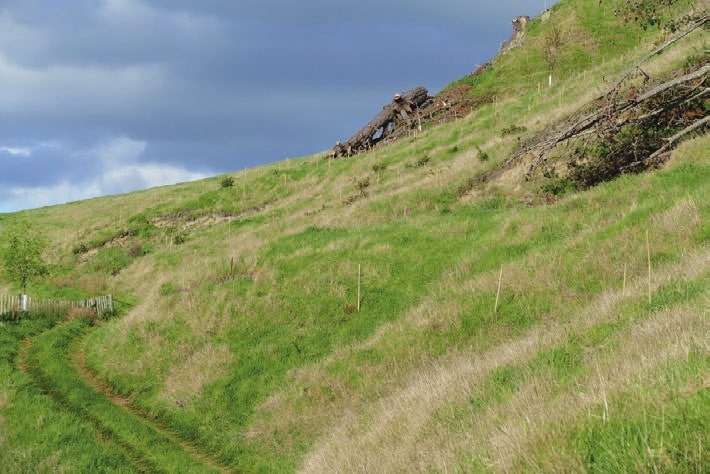
Here was production forestry, but not a radiata monoculture and it was not going to leave a scarred hillside after clear-felling. It opened my eyes to other models of forestry which I had barely known existed and it filled me with determination to somehow be involved in the establishment of continuous canopy forestry.
When Hamish and I met several years later we started looking for land for forestry almost straight away. It took a while, but last year we bought 28 hectares of summer-dry hill country 15 minutes’ drive east of Whanganui. At the time of writing we are going into our second year of planting. The learning curve is as steep as our slopes and we are already re-thinking some of last year’s planting decisions. I have learned that if you ask five farm foresters for advice you will get six opinions. We are happy with all of them and sift through to figure out what will likely work best in the context of our climate and soils.
Vital NZFFA help
We could not have got started without all we have learned from being part of the NZFFA. The alternative species weekend in the Waikato last year was brilliant, full of practical information about the species we intend to grow, everything from totara to redwoods, blackwoods and cypresses. We have a shelf full of publications by Tane’s Tree Trust and Ian Barton’s book on Continuous Canopy Forestry has been indispensable.
We are lucky to have also had practical support from our regional council. Our local land management co-ordinator at Horizons, Myles Guy, was an enthusiastic supporter and provided practical support in all kinds of ways during our first 18 months. He navigated us through the Afforestation Grant Scheme, loaned us equipment such as poplar rammers and an auger and even showed up with the council’s side-by-side to transport planting materials to the very back of the farm when our farm tracks turned to impassable mud late in the winter.
More continuous canopy forestry
Working on the case study for Horizons has been an eye-opener. I have embarked on something more experimental than I initially realised. But we are keen to see more continuous canopy forestry in our region and across the country. It is disheartening to read what Ian Barton wrote more than a decade ago. His book is such a solid account of what was known and also full of pointers to the research and trials that needed to be done, and most of it has not been done.
More money needs to go serious evaluation of alternative models of forestry. I am heartened by the funding the Wairarapa and Wellington branches obtained to carry out a feasibility study into target diameter harvesting of radiata under a continuous canopy regime − the results of that study were in the May Tree Grower.
I have come to realise that alternative species, continuous canopy forestry and low-impact harvesting are three discrete concepts. In the case of our farm and Papaiti forest, all three are tightly integrated. But each can stand on its own or be combined in different ways. All this, along with my participation in the annual conference as one of the young farm foresters, has clarified what Hamish and I want to focus on beyond our own block − encouraging the establishment of or conversion to continuous canopy forestry.
I concede the economic case is yet to be proved but think continuous canopy forestry is very relevant in a range of situations where straight economic return is not the sole focus. And given the One Billion Trees funding for alternative exotic and native species, now is a good time. I am not sure we will see such generous inducements again.
Rachel Rose and Hamish Randle received the Michael Hay Memorial Award at the 2019 NZFFA conference. They are enthusiastic members of the Middle Districts branch.

 Farm Forestry New Zealand
Farm Forestry New Zealand